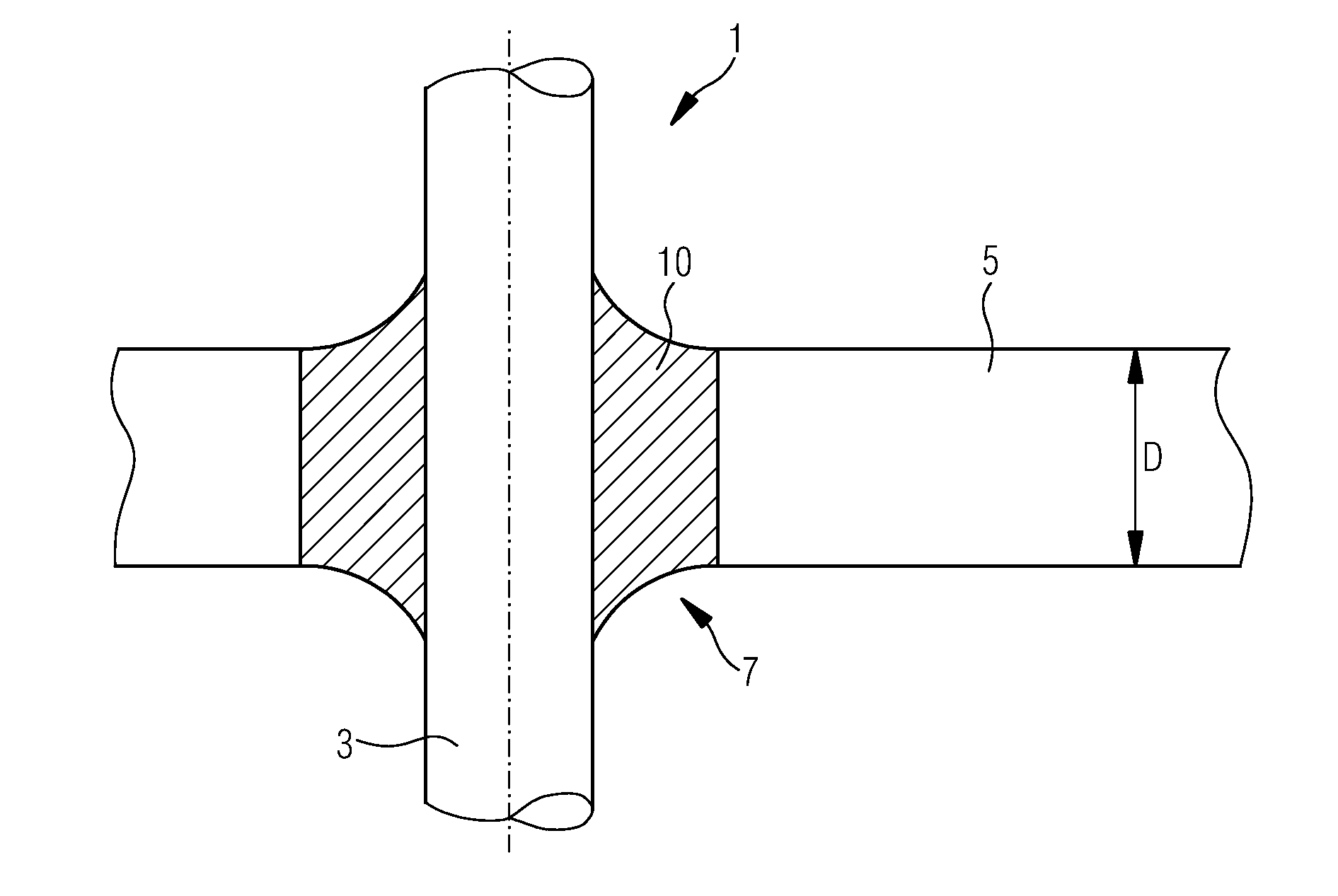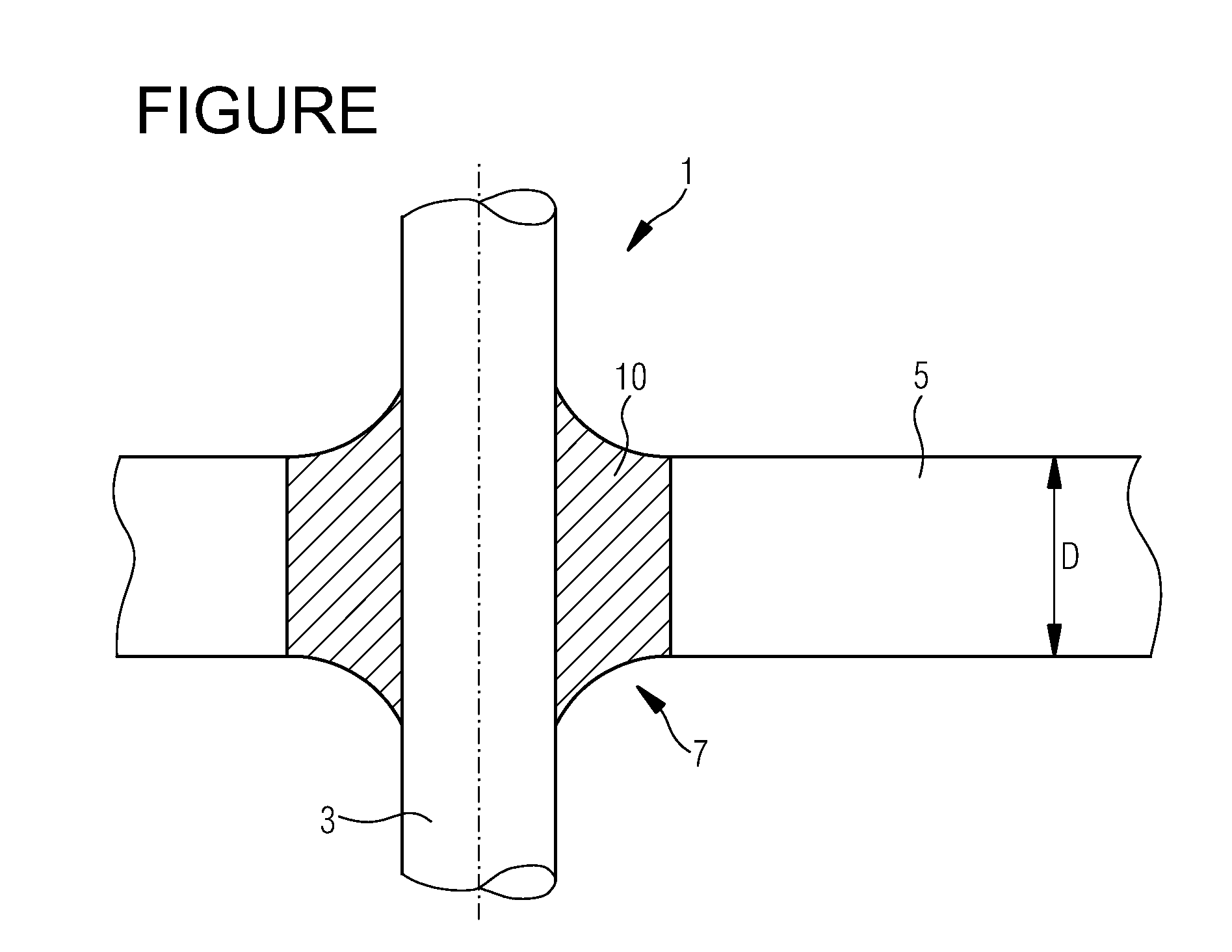Feed-through
a technology of feed-through and conductive material, which is applied in the direction of conductive materials, non-conductive materials with dispersed conductive materials, electron beam welding apparatus, etc., can solve the problems of corrosion resistance, vibration resistance, and inability to integrate conductors, in particular metal pins into a base body consisting of light metals such as aluminum, and achieve high temperature resistance and sufficient chemical resistance.
- Summary
- Abstract
- Description
- Claims
- Application Information
AI Technical Summary
Benefits of technology
Problems solved by technology
Method used
Image
Examples
exemplary embodiment 1 (
[0060AB1) in Table 1 is suitable in particular for aluminum / aluminum sealing, that is sealing an aluminum pin as conductor into a surrounding aluminum base body.
exemplary embodiment 6
[0061 in Table 1 is, for example, suitable for Cu / Al glazing, that is sealing a copper pin in the embodiment of a conductor into a surrounding aluminum base body.
[0062]Even though some of the exemplary embodiments indicate a coefficient of expansion which is too low for bonding with Cu it becomes clear that a high Li component can be dissolved in the molten mass without the glass becoming unstable with a glass composition of this type.
[0063]Exemplary embodiments 7 and 8 (AB7 and AB8) distinguish themselves in that they contain Bi2O3, in place of PbO, as is the case in exemplary embodiment 6 (AB6).
[0064]Surprisingly it has been shown that the water resistance can be clearly increased by Bi2O3. For example, by introducing 1 mol-% Bi2O3 a 10-times higher hydrolytic resistance could be achieved in exemplary embodiment 8 (AB8) compared to exemplary embodiment 1 (AB1) with essentially the same alkali content. This is surprising to the expert.
[0065]Bi2O3, can in particular also be used in ...
PUM
| Property | Measurement | Unit |
|---|---|---|
| temperatures | aaaaa | aaaaa |
| sealing temperature | aaaaa | aaaaa |
| temperature | aaaaa | aaaaa |
Abstract
Description
Claims
Application Information
 Login to View More
Login to View More - R&D
- Intellectual Property
- Life Sciences
- Materials
- Tech Scout
- Unparalleled Data Quality
- Higher Quality Content
- 60% Fewer Hallucinations
Browse by: Latest US Patents, China's latest patents, Technical Efficacy Thesaurus, Application Domain, Technology Topic, Popular Technical Reports.
© 2025 PatSnap. All rights reserved.Legal|Privacy policy|Modern Slavery Act Transparency Statement|Sitemap|About US| Contact US: help@patsnap.com


